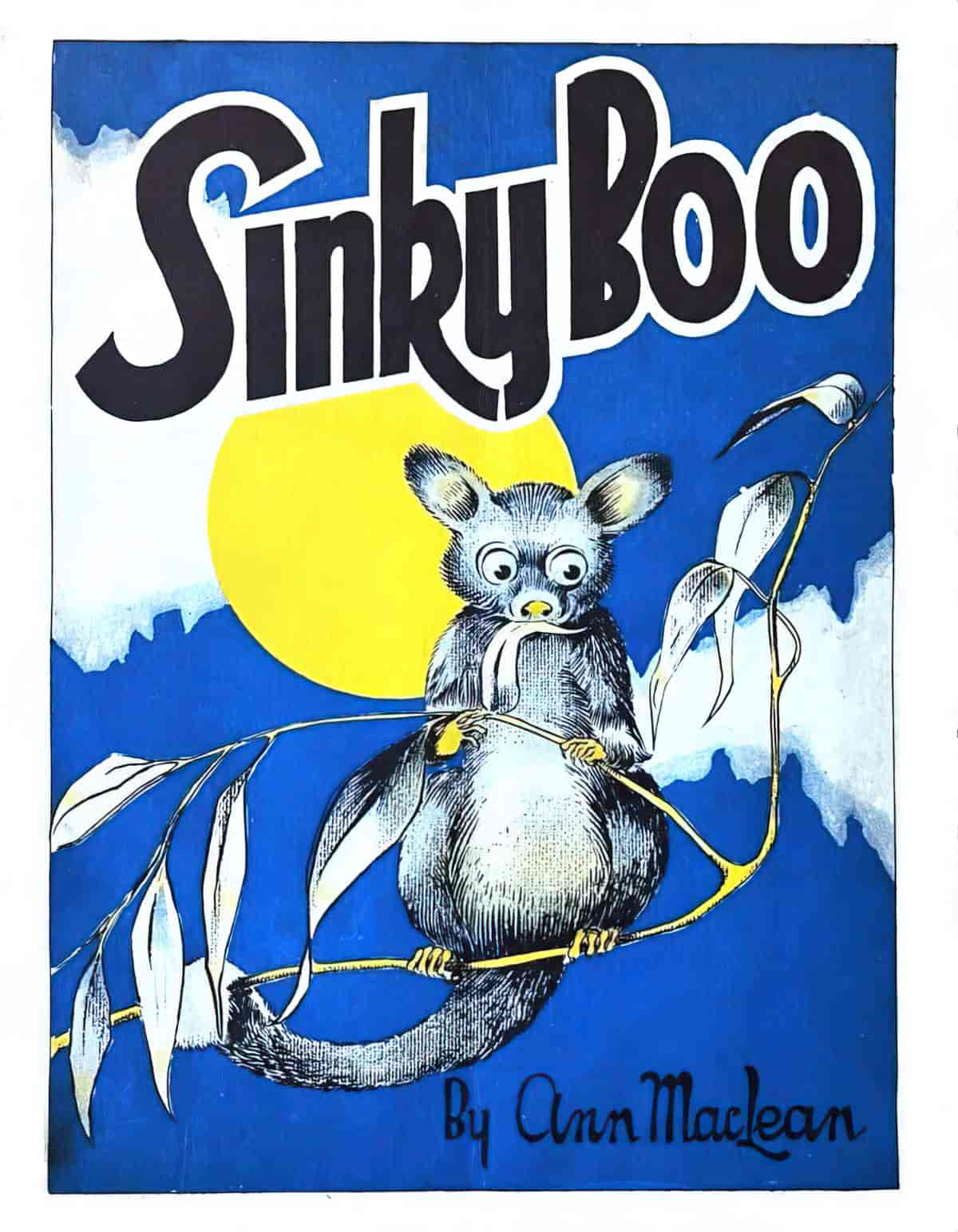If you find a copy of Sinky Boo in a secondhand bookstore, look after it. It’s rare. Published in 1947, Sinky Boo was written by an unknown writer called Ann Maclean and a one-eyed artist best known for his fairground artwork at Sydney’s Luna Park.
ART BARTON: AUSTRALIA’S FINEST FAIRGROUND ILLUSTRATOR
Art Barton (1895 – 1975) was born in Quorn (see how his life already rhymes?), which is in the Flinders Ranges of South Australia. These days it’s mostly a tourist destination and occasionally a film set, but in the late 1800s Quorn was established as part of the railway building efforts (the railway from Port Augusta stretching north.).
Art didn’t stay in Quorn. I don’t imagine there was a helluva lot going on there. His family moved to Sydney when Art was a child.
Then the war happened. He volunteered for service in 1916 and was a WW1 machine gunner. He lost an eye and took up sketching while recuperating in France. He must have discovered a passion for sketching because when the war ended he enrolled as a student at the London School of Arts.
After that he returned to Australia. He monetised his art in various ways: He started a magazine, worked as a sign-writer and also as a portrait artist at one of the David Jones stores. (We don’t know which one, but probably Sydney?)
Now here’s a job that no longer exists: Art Barton worked from 1935 to 1970 as a fairground artist. He started to lose sight in his one remaining eye and had to retired. He died five years later.
Today Art Barton is regarded as Australia’s finest fairground artist. (How many could there have been?)
What does a fairground artist do? Paints murals and various artwork throughout the fairground. If you’ve ever been to Sydney’s Luna Park, you’ll have been terrified or impressed by the famous Happy Face entrance. Art painted that.
He also drew a number of cartoons and comic strips.
At some point he got into political cartoons. (He backed Labour and lampooned the Country and Progressive National Party.) Most of this work was never published, apparently.
Around the time he illustrated Ann Maclean’s Sinky Boo children’s picture book he was working for Hurricane Comics. Looks like this is one of the few (only) children’s picture books he ever illustrated.
Of course, Art Barton Park on Sydney’s North Shore is named after this guy.
ANN MACLEAN
Unfortunately, it is far more difficult to find anything about Ann MacLean. This is possibly because she has a common name, and also because she was a woman and, unlike Art Barton, likely had care of her own family as her main vocation.
So let’s talk about her book, about a cheeky possum named Sinky Boo who gets into all kinds of mischief.
Children’s literature of the post-war era had a very specific purpose: To calm both parents and children after their collective trauma. Even if the children themselves wanted drama and tension, the adult gatekeepers of children’s literature were clearly craving sweet stories about groups of animals living in forest and woodland utopias. This was the era of Pookie (in England). America had its own woodland utopias. Sinky Boo added to the Australian corpus of children’s literature featuring kangaroos, possums, wombats and other native flora and fauna.
I wouldn’t exactly call it great literature. The stories are written in rhyming verse with capitalisation to show where emphasis should go. The stories and language are somewhat saccharine and mawkish by today’s standards.
But it’s always interesting to look back at earlier eras of children’s literature and see what our Australian (great) grandparents may have been reading as children.
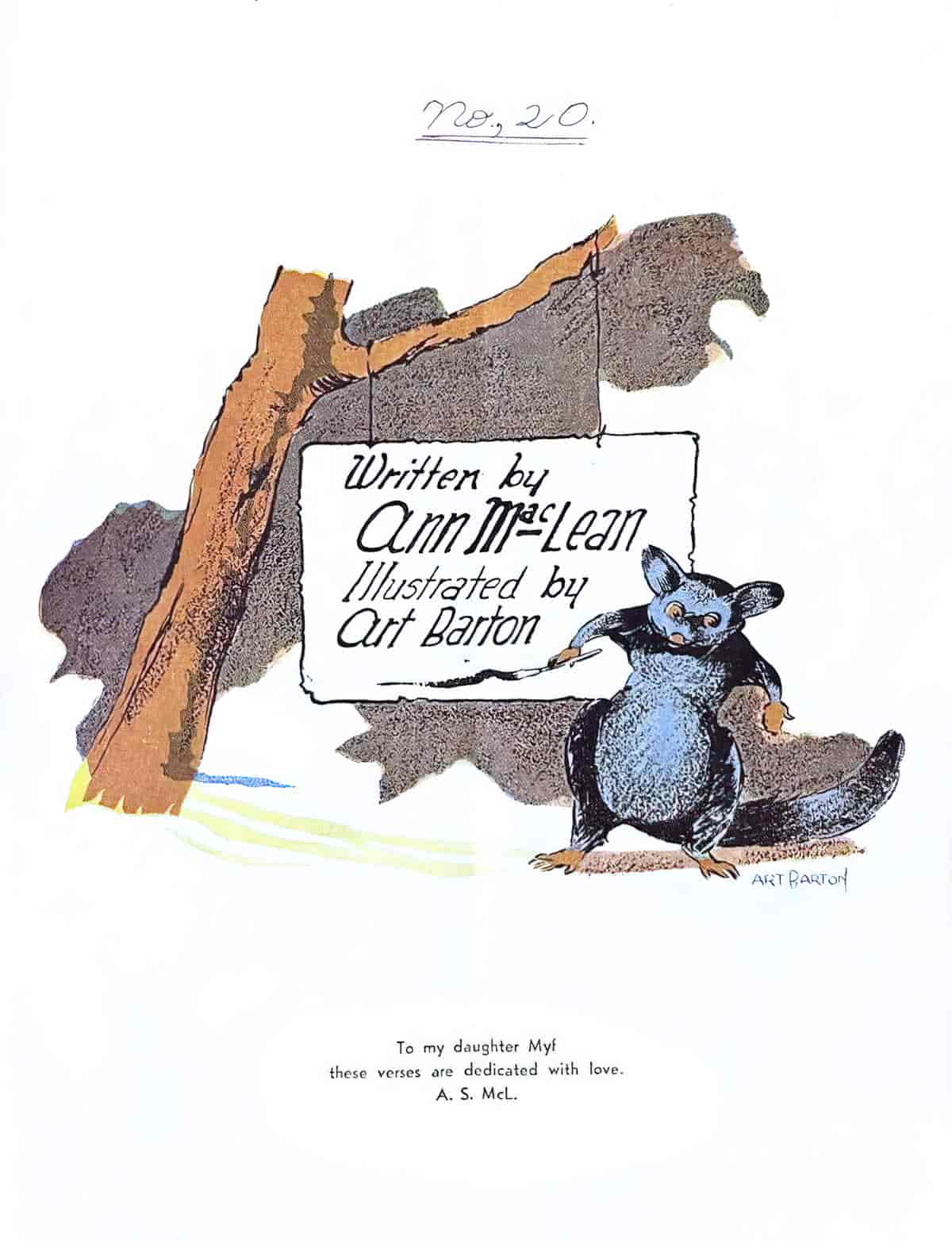
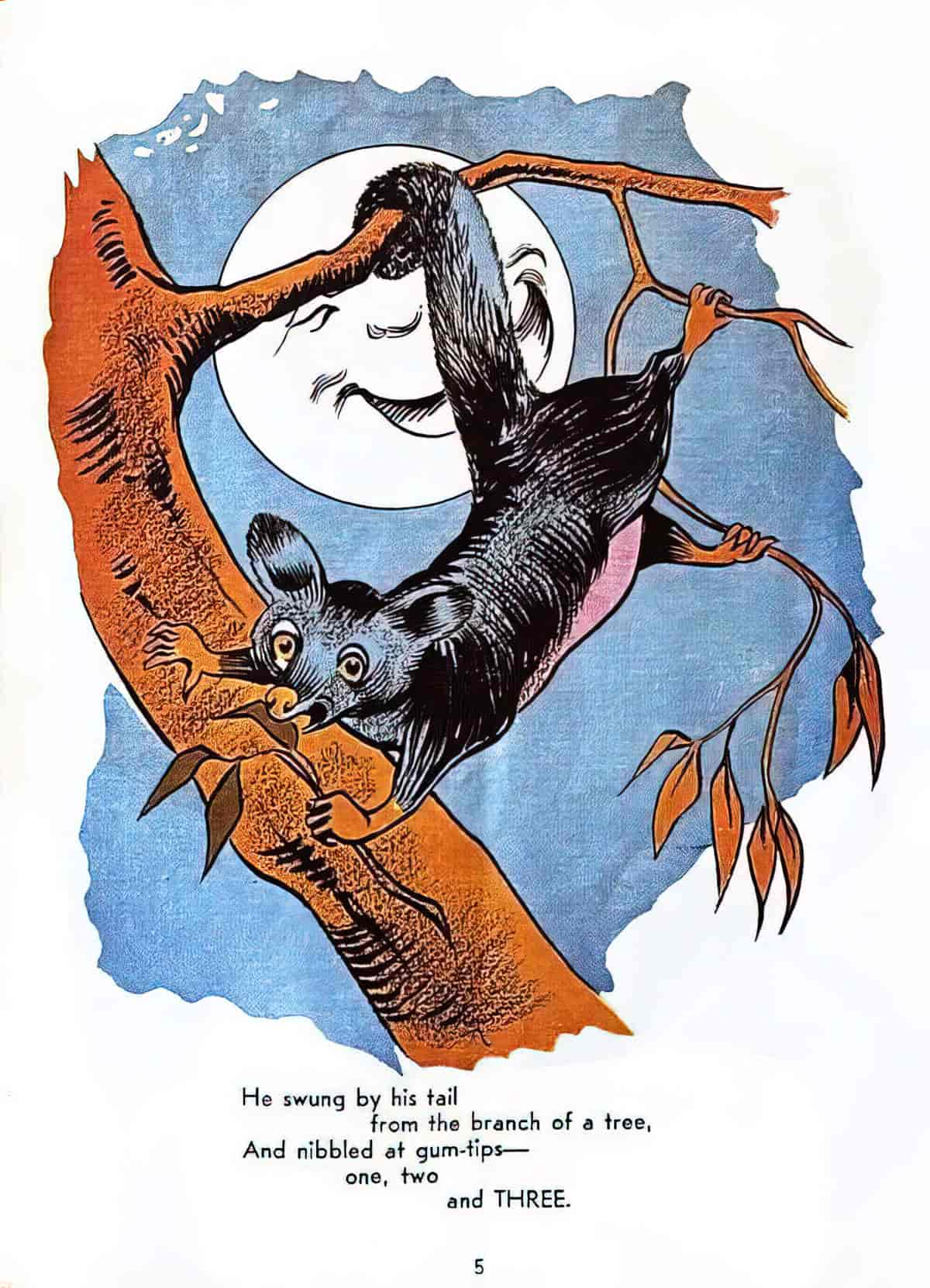
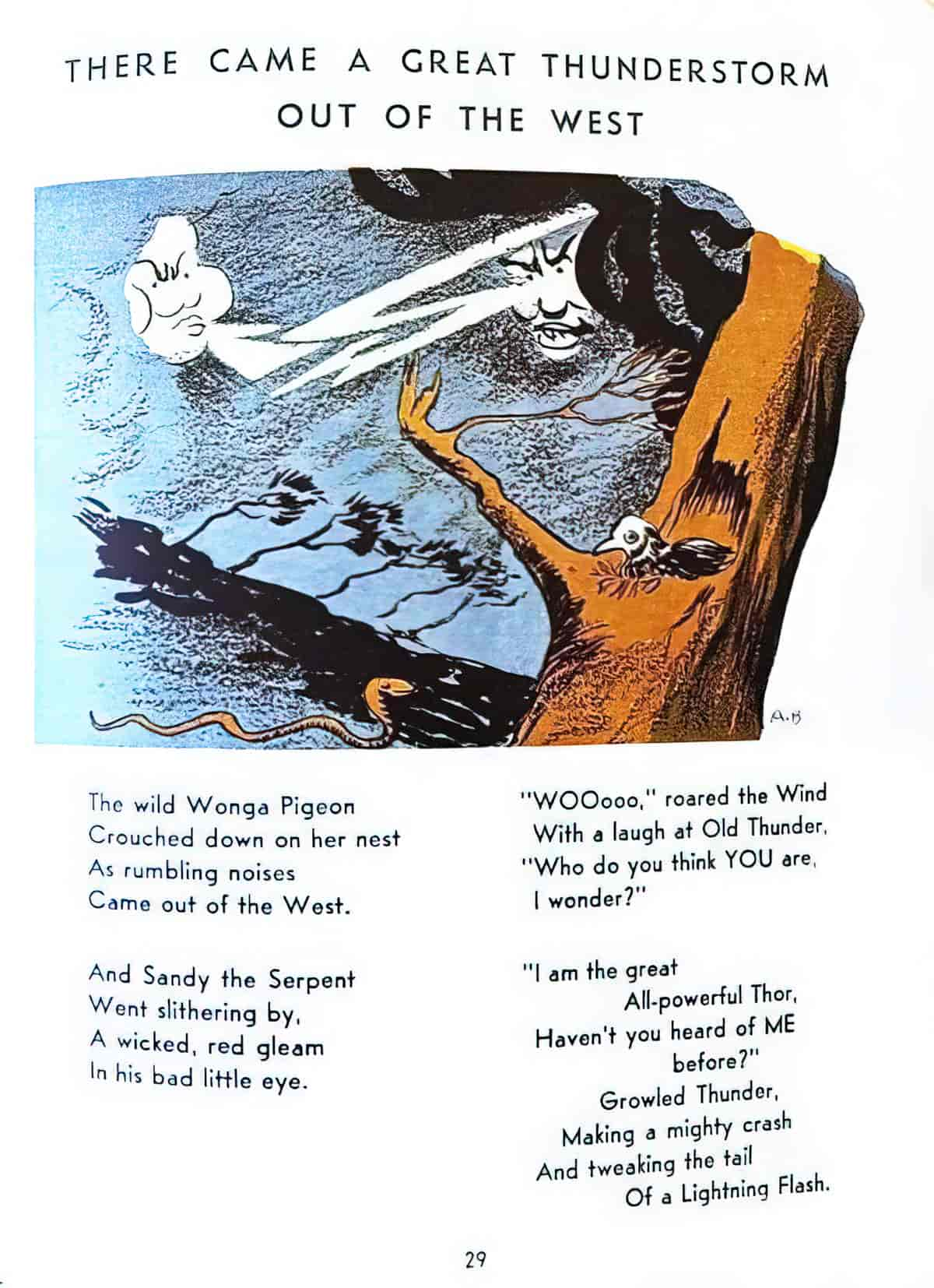
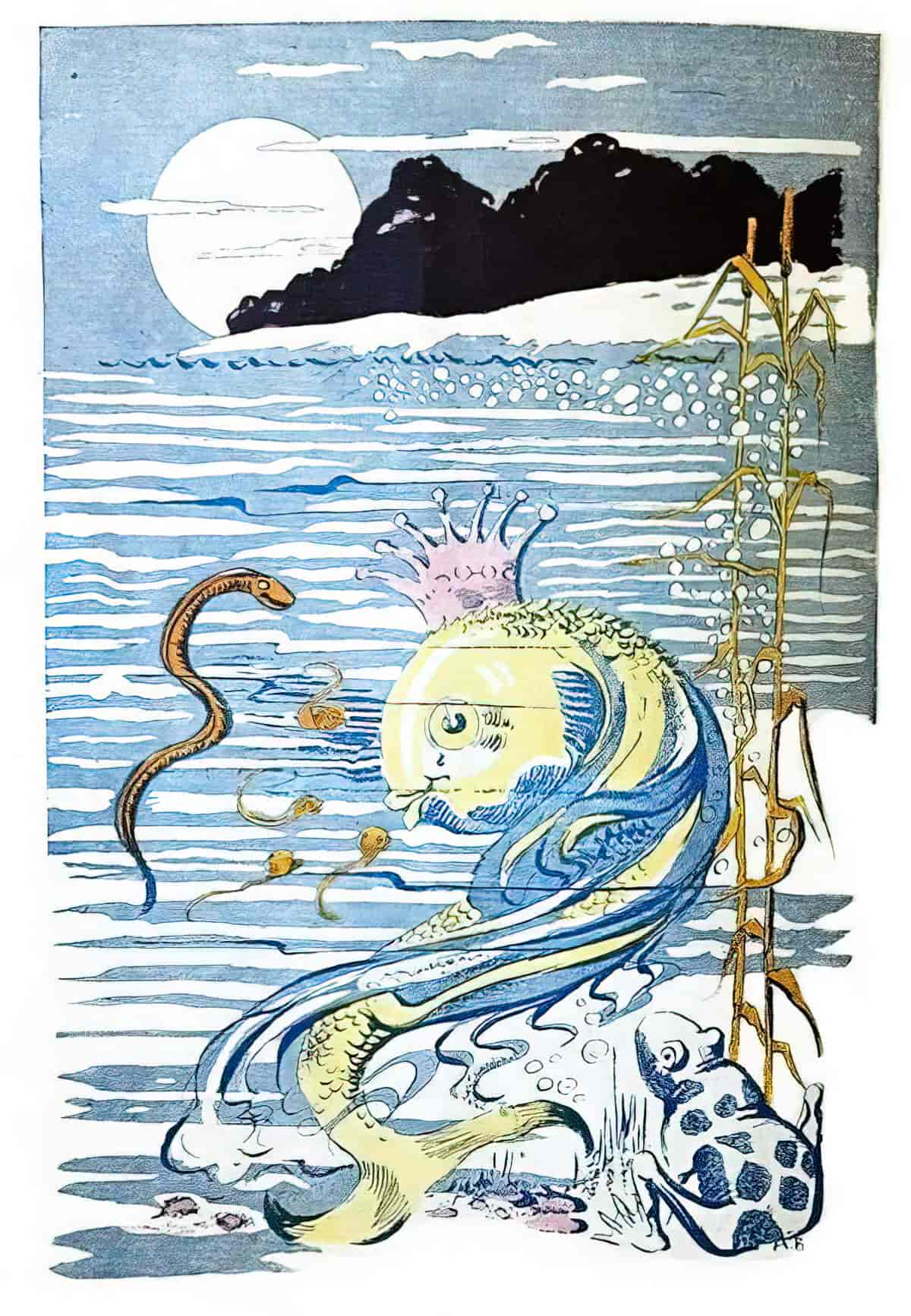
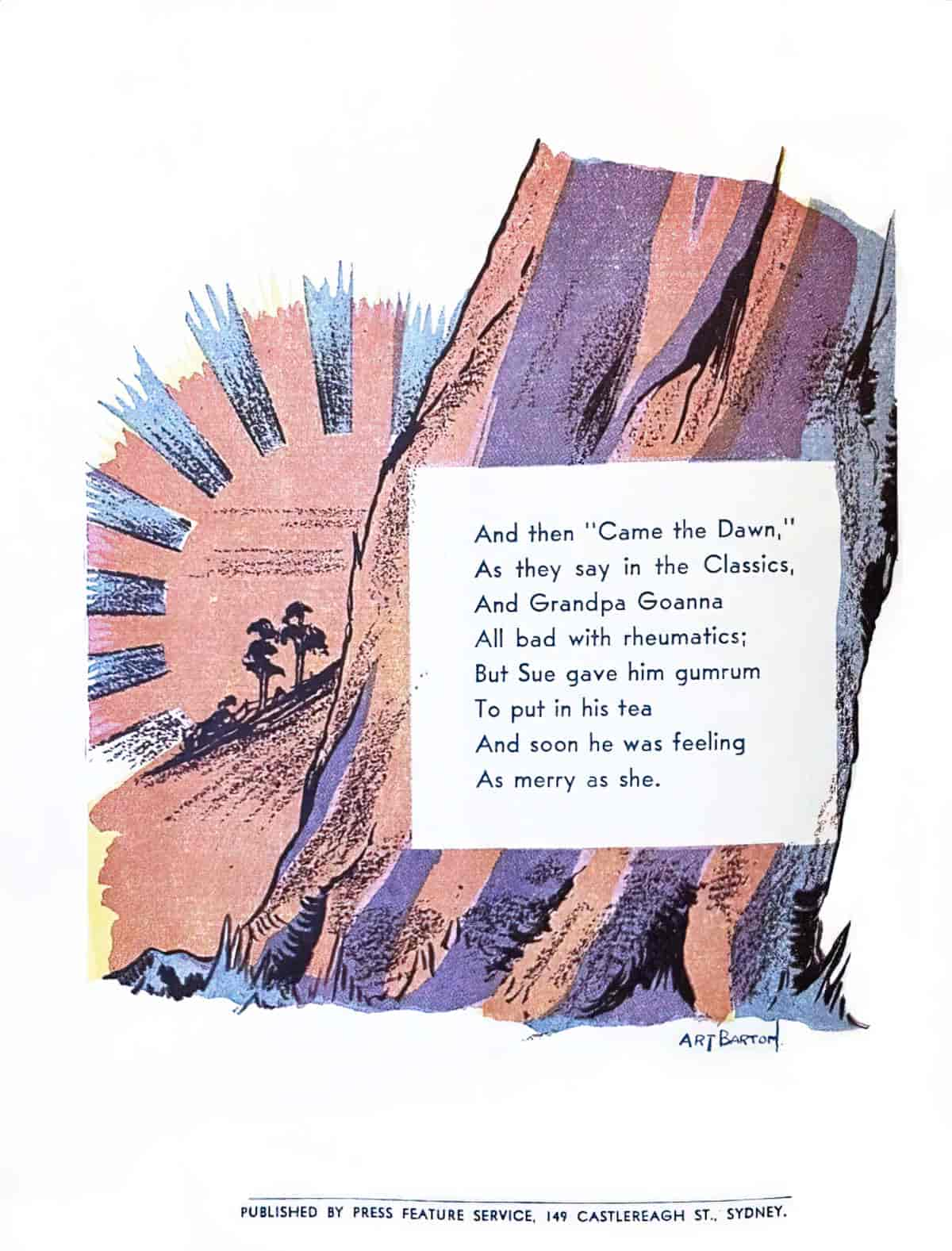
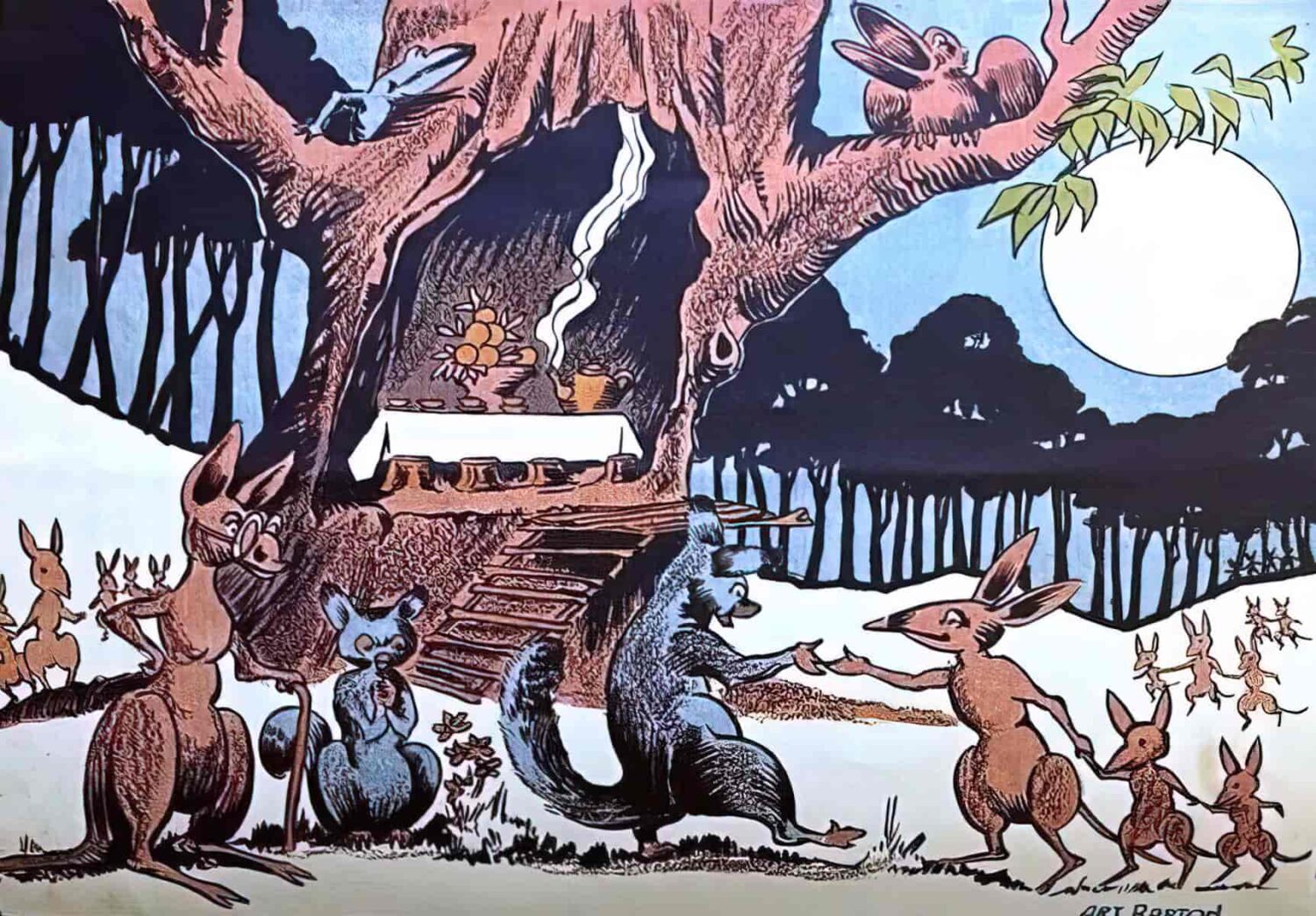
THEY THOUGHT THEY’D LOST THE FISH’S CROWN
"Oh Kangaroo," sobbed Sister Sue, "I've looked and looked for Sinky Boo; He isn't down at Possum Town, And PRINCESS FISH HAS LOST HER CROWN! A thing like that he WOULDN'T do-- He wouldn't, would he, Kangaroo? But all the little tadpoles say He said he would, the other day; He only meant to take a peep, When Princess Fish was fast asleep; He EVEN might have tried it on, And now--oh dear--the crown has GONE." "Gumnuts and Tips," shrieked Cousin Prue, "WHATEVER will Her Highness DO! A crown just isn't like a HAT-- A thing you make from this or that." Old Kangaroo just shook his head, Then blinked an eye before he said: "I'LL have a word with Dr. Trout, And see what this is all about." He waved a paw and said "Good-day," Then turned and gravely hopped away. Poor Sue broke down and dropped a tear Between two gumnuts hanging near, Then wiped her eyes and sniffed: "Oh Prue, I WONDER what we ought to do. I've looked for Sinky High and Low, And EVEN where those humans grow." "I KNOW," cried Prue, "let's ask Bull Frog; I saw him sitting on a log Just now when I was hurrying by-- He hangs the washing out to dry For Princess Fish, and every night He scrubs the crown to keep it bright." Just then they heard a hungry growl-- Bad Dingo Dan was on the prowl; "I'll have your bones," he growled and muttered; "Nice tasty bones--I'll have 'em buttered' Yeah, buttered bones for ME to-night-- Fat buttered bones with thingametight." Poor Sue was frozen stiff with fear, And Cousin Prue felt "awful queer"; They didn't move, or make a sound, But Dingo kept on sniffing round. Until at last Old Kangaroo Came hopping back with Sinky Boo; Then Dingo turned and rushed away, But shook his tail as if to say: "Those buttered bones I won't forget-- I'll scrunch 'em into pieces yet." Then Sue unfroze, and Cousin Prue Shook both her paws at Sinky Boo: "Now tell us where you've been," cried she. "We've looked in every gummy tree, And all about and Here and There, And EVEN in the HUMAN'S lair." Young Sinky Boo was MOST contrite; He said he'd had an AWFUL fright; Some humans, climbing up the trees, He tried to catch him, IF YOU PLEASE! The crown had not been lost at all-- They found it in the Palace Hall.
WHEN WALLACE THE WOMBAT SHED TERRIBLE TEARS
Wee Wallace the Wombat, As wan as the moon, Sat weeping and wailing Beside the lagoon, Till all the small creatures That live in the logs, The ants and the beetles And spotted, brown frogs, Came peeping and prying, All filled with surprise To see the big tear-drops In Wallace's eyes. The ants called their children And gave them a wash In Wallace's tears As they feel with a splosh, One after the other-- Drip, drippity drip-- Till all the ant children Were wet to the hip. Black Bennie and Beetle Said Wallace's tears Were something unheard of And WHAT were his fears? It must be a matter Affecting him badly, Else WHY was he weeping So long and so sadly. "I think," said an ant, As she saved with a frown Her thirty-ninth grandchild From trying to drown, "He's given to tears As the clouds are to rain, And THAT is what comes Of not having a brain."
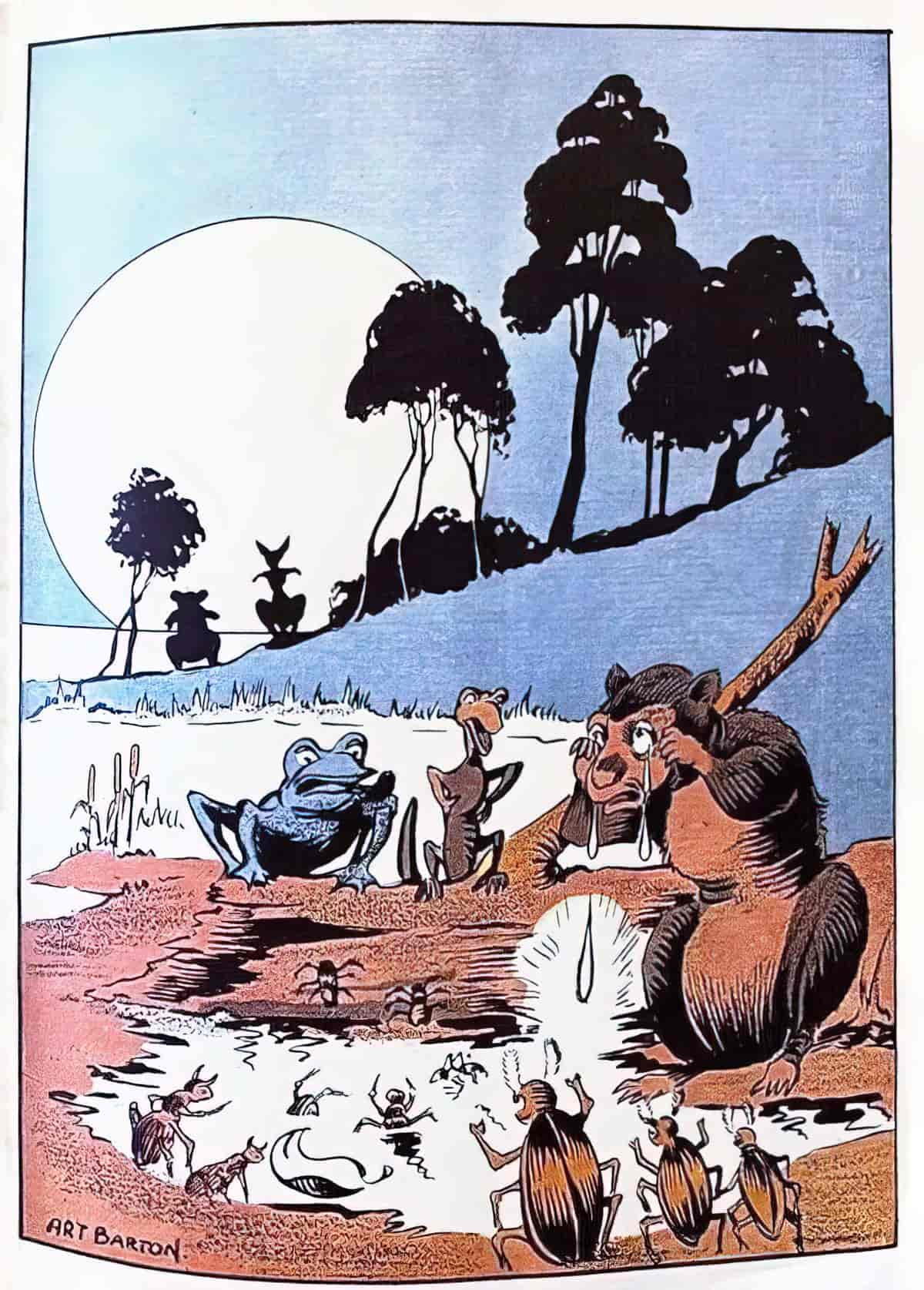
THE WICKED PRANKS OF SINKY BOO
So wicked was Sinky ONE midsummer's night, I think he might even Have taken a bite. At Grandpapa Greyowl-- That DIGNIFIED bird-- Who hooted, but never Had uttered a word. He wouldn't play games With dear little Sue, But quarrelled instead With Kangaroo; And when Goanna Came ambling by He used his nose For a gum-nut shy. Then flicked his tail With a wicked swish Right in the face Of Princess Fish, Who lived in her palace Of waterdrops In the hole in the creek That NEVER stops.
WHEN SINKY ASKED THE BANDICOOTS TO TEA
"Now hurry, Sue," cried Sinky Boo, "You KNOW we've lots and lots to do; The bandicoots are hopping down To have a look at Possum Town; And if they like it p'raps they'll stay Or come again ANOTHER day." "I don't know why you always do Such STUPID things," said Sister Sue. "Those bandicoots live on the ground-- They'll only flip and flop around." "We'll give them cups of gum-leaf tea And teach them how to climb a tree," Said Sinky Boo; "and, if they wish, We'll take a peep at PRINCESS FISH."
